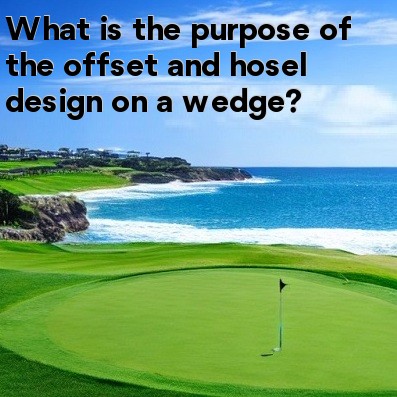
What is the purpose of the offset and hosel design on a wedge?
When it comes to wedges, the offset and hosel design are both crucial factors that can greatly impact the performance of the club. Let's take a closer look at each of these elements:
Offset:
Offset refers to the position of the leading edge of the clubface relative to the hosel. In other words, it's the distance between the front of the hosel and the front edge of the clubface. Wedges typically have some degree of offset, with the amount varying between different models and manufacturers.
The primary purpose of offset on a wedge is to help golfers in achieving a better position at impact. By moving the leading edge slightly back from the hosel, offset encourages a more forward press of the hands, effectively reducing the tendency to hit the ball with an open face. This helps to promote a square impact and ensures that the ball is struck cleanly, resulting in better control and accuracy.
Furthermore, offset can also help golfers in getting the ball airborne more easily. By positioning the leading edge slightly behind the hosel, there is a greater opportunity to lift the ball off the ground, making it easier to hit high, soft shots that are often required around the greens.
Hosel Design:
The hosel design refers to the angle at which the shaft connects to the clubhead. It plays an important role in determining the trajectory and shot-making capabilities of a wedge.
An upright hosel design, where the shaft connects to the clubhead at a steeper angle, tends to produce shots with a lower trajectory. This can be advantageous when playing in windy conditions or when trying to control the distance and roll of the ball. Low-trajectory shots have a tendency to release more upon landing.
On the other hand, a more shallow hosel design, where the shaft connects at a shallower angle, is known to promote higher and softer shots. This can be beneficial when playing to a pin that is protected by a bunker or when you need to carry the ball over an obstacle and then stop it quickly on the green.
With the ability to adjust the hosel design, golfers can fine-tune the loft and lie angle of their wedge. This allows them to effectively control the trajectory and spin of their shots to suit different playing conditions and shot requirements.
- In summary, the offset and hosel design of a wedge both serve important purposes in enhancing a golfer's performance.
- Offset helps to promote a more square impact and lift the ball easily, resulting in improved control and accuracy.
- The hosel design influences the trajectory of the shot, allowing golfers to adjust the loft and lie angle to suit different playing conditions and shot requirements.
Understanding the role of these design elements can help golfers make more informed decisions when selecting wedges and improve their overall performance around the greens.





